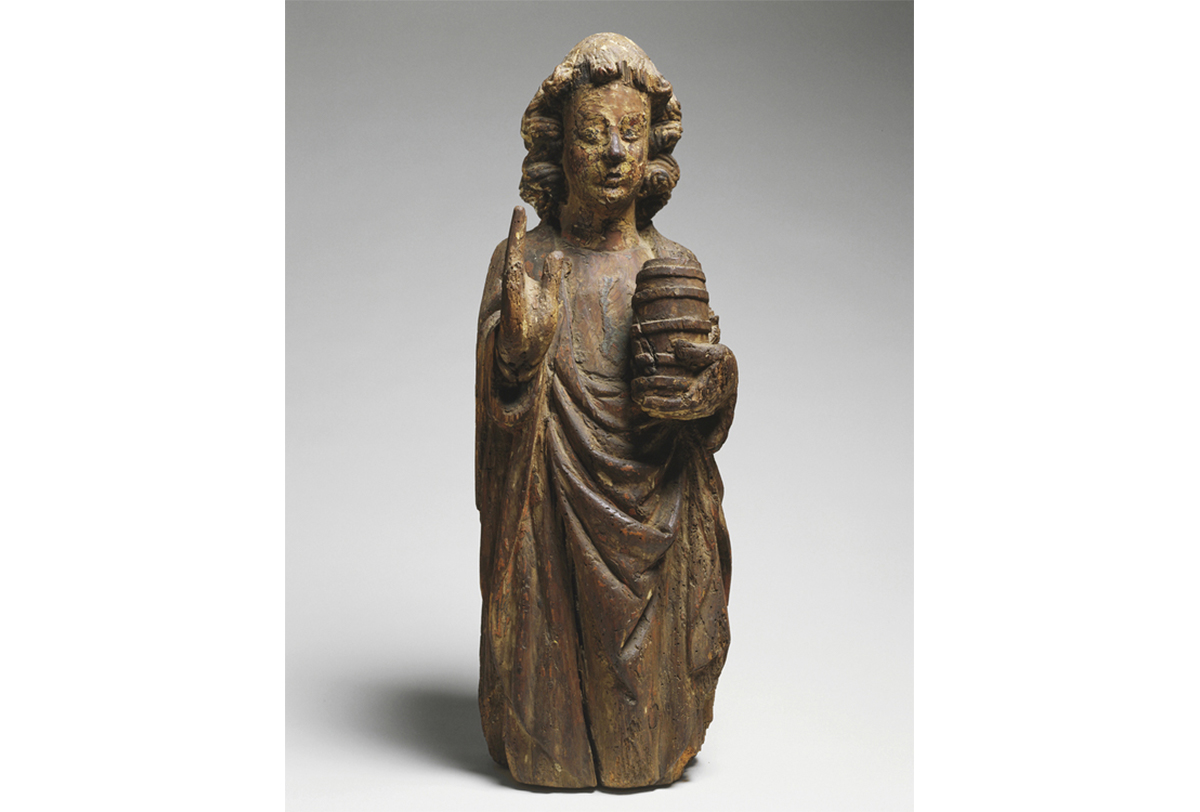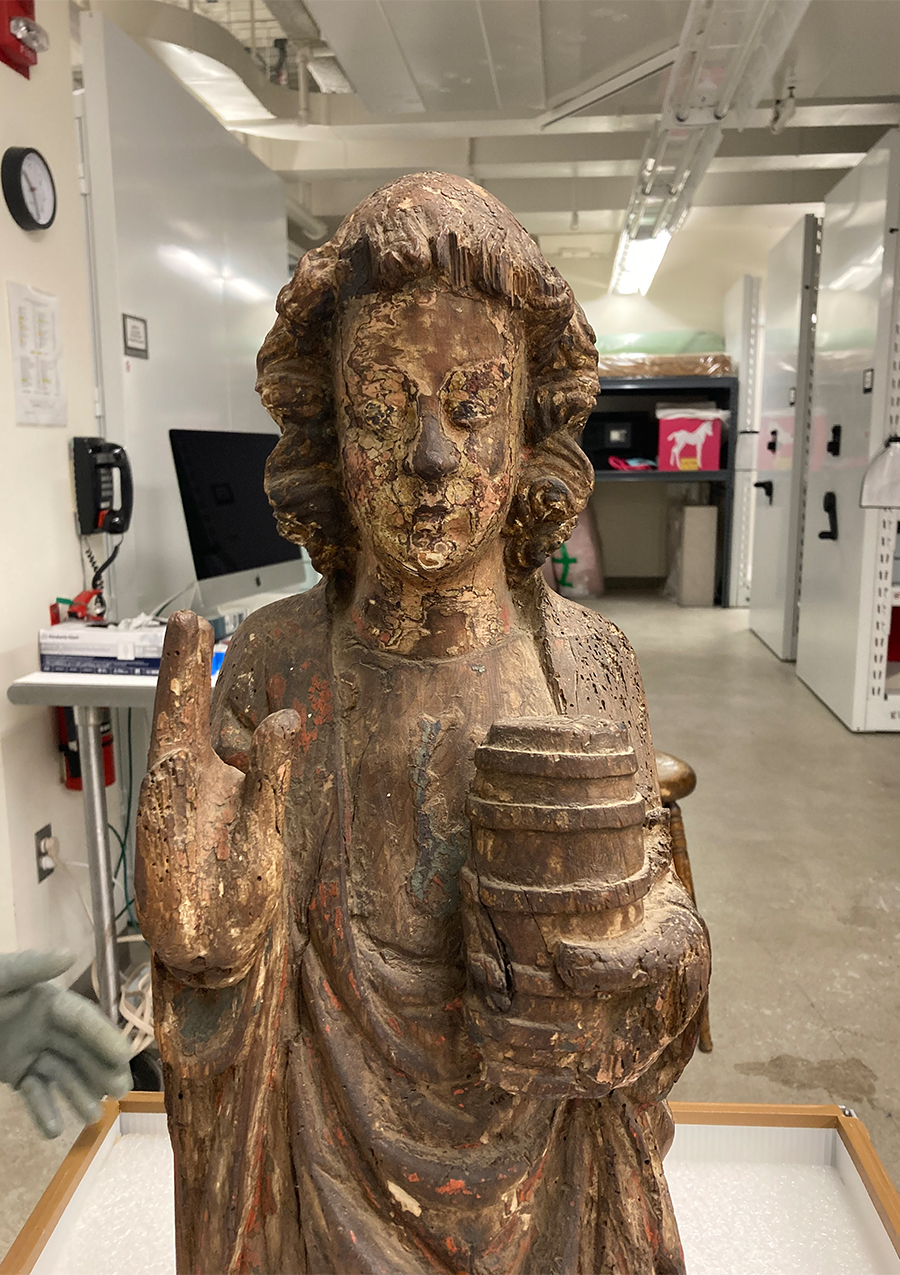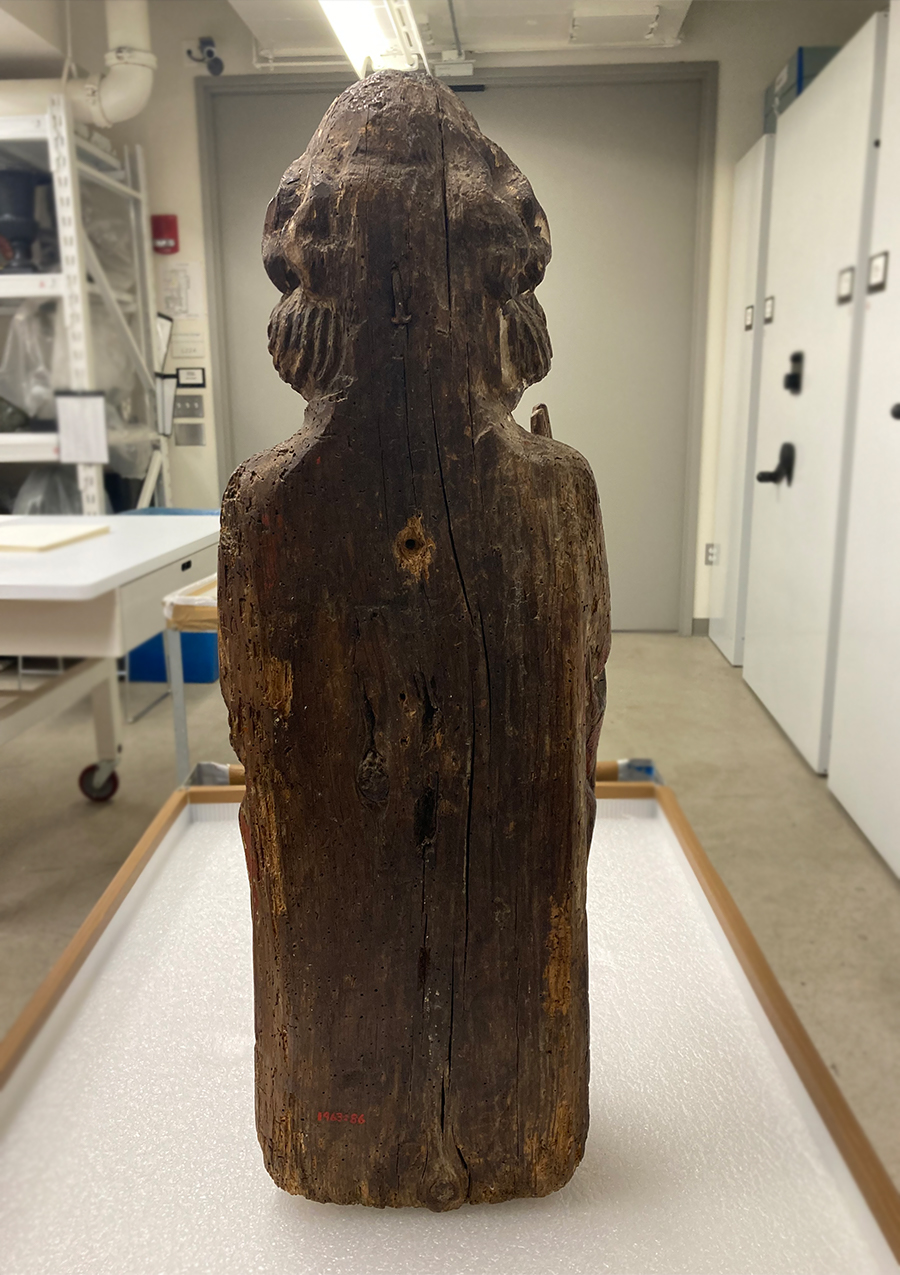
What Makes Medieval Art Sing?
Hear from guest blogger Cecily Hughes, graduate student intern and MA candidate at UMass Amherst, about her work this past summer at SCMA. Find out what interests her most about Medieval art and how she contributed to an upcoming exhibition featuring some of the works in the collection. In this blog post, Cecily discusses Blessing of Saint or St. John the Evangelist by an unknown French artist.
The Smith College Museum of Art has an excellent and tantalizing collection of modern and contemporary works, yet it was SCMA’s medieval sculptures that I was most excited to interact with during my internship this summer. But as a young, progressive, cisgender women (and dedicated vegetarian!), some might wonder what drives me to study medieval art? How does something so far removed from our time and place relate to my life, interests and identity?
Luckily, my work at SCMA—from researching important medieval women to the hands-on examination of wood that someone lovingly carved into an unassuming guardian of a barrel (of wine or ale?!) over seven hundred years ago—allowed me the space and resources to examine this very question.


Left: Unknown French Artist, Blessing Saint or St. John the Evangelist, Late 13th Century, SC 1963.86. Right: Detail of back
In works like our drinking companion above, I found a sense of fundamental humanity. With his protective gesture (“please don’t let the beer go off—or run out!”), he speaks of a familiar desire to gather with friends and toast an important event: a birth, a wedding, or the end to a difficult year. He reminds me that, just like us, medieval people faced a world full of looming environmental threats—would drought wreak havoc on their grapevines or wheat fields? Would famine or disease take family and friends forever away from the dinner table? Faced with forces outside of their control, they devoted precious time, energy, and materials (wood, after all, was a direct gift of the natural world, something to be revered and respected) to create an intercessor between the human world and whatever higher powers might be listening.
Moreover, where some would see age—he is certainly cracked, worm-eaten, and weathered and his barrel looks liable to leak—I have learned to find beauty. His scars from generations of nails and other hanging equipment are signs that he was well loved. Why? Because they are evidence that he was displayed again and again, hung on numerous walls across time and place, a constant companion to countless medieval people.
Of course, we might never know all the details of his long life, but these mysteries of medieval art only serve to further draw me in. What were the anonymous artist’s aspirations for this fine fellow? Who looked at this humble sculpture with a hope in their eye, a fear in their hearts, or a song bubbling to their lips? What has our sainted cellar keeper (if that is what he is) seen in his travels from tree to protector to treasured artifact?
For me, working with medieval artwork is a thrilling and transportive event. From the carefully carved curls to the (sometimes garish) coats of painting loving reapplied year after year, these objects remind me of timeless human preoccupations: wondering who we can turn to in times of despair and crisis, how to capture joy, and the bringing together of communities, united under common purpose—celebrations, mourning, the creation of something greater and more beautiful than the sum of its parts.